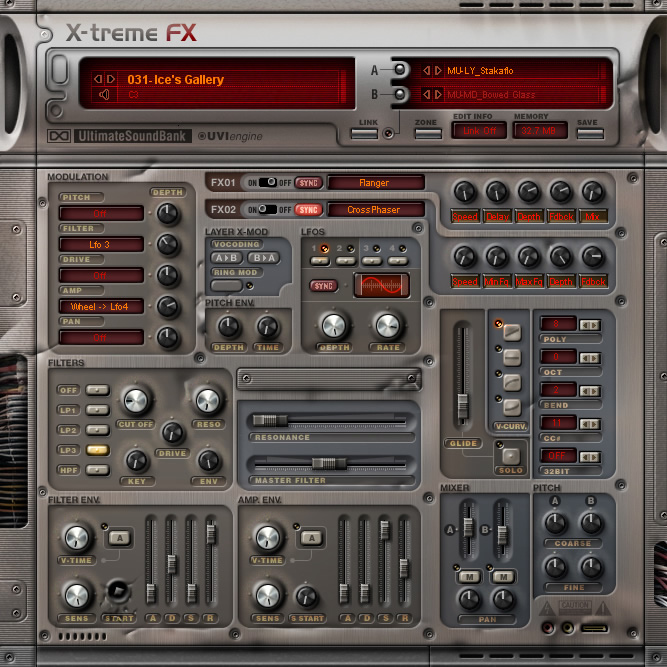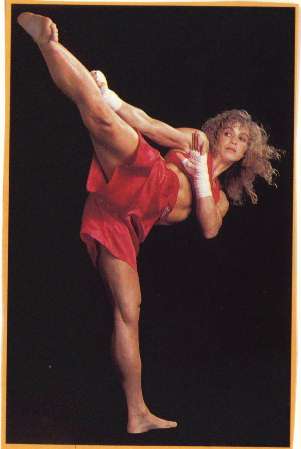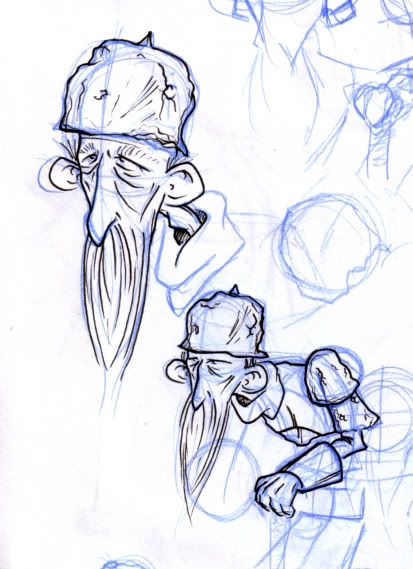A martial manifestation of the Middle Way, could be when one practices a move/block, not to concentrate on it being a block or an attack. For example, when one is walking in the snow, the depth that one's step
sinks, is not predictable:
Walking in the Snow :
The step could stay on top of hard packed snow, or ice; one could sink to show depth, or the step could sink to knee depth or greater. One should not attach themselves to expecting one depth, or even that the ankle position or bending; will be the same. The angle of the foot after the fall, relative to the supporting plane, could be pointing: uphill/ lifted up - level/ prone or - downhill/ tilted down.
One should not attach themselves to how to hold the foot, since one's point of contact might optimum ally be: the heel for leaning backwards to prevent forward slide, the flat of the foot for less sinking or the ball of the foot for sinking deeply into the snow.
Since the step is dynamic, it is better not to concentrate on form, or a pre-set way of walking. Every step is different. One should not just see with their mind or eyes, but with their feet, and center. The move becomes part of the seeing, not just a result of it!
One should use their arms, in a similar manner, not committing to form, or distance. A other example; is running in the dark, on a dirt trail, or on the forest floor. If you were to watch and calculate each individual step, the speed would never be greater than a walk. Letting your foot feel the surface of the ground, and adjusting accordingly, is to run, without a pre-set form.
POSITION :
If one were to think of position, it is ideal to position one's energy and move at half the distance since: blocking at full distance commits one to the move; blocking without full extension gives room for: changing direction, stopping the move, responding to another move, or changing to offense.
A Buddhist meditative concept of practice, for me, would be to not concentrate on the practical application of the move to offense or defense, but to become one with the flow and energy. The move being more than it's use to the practitioner.
A posture that focuses on one's own energy flow, and the feeling of another's Chi through one's center or hand contact, would be more universal and whole. Contrast this to responding, via cause and effect to another's move, which is based on reactions, and have specific limited paths. Better to be there before the move, seeing the Yi and Chi.
In a fighting situation, movements should not be committed to, but should be dynamic and perceptive. Sometimes non-movement is the better than the response. Feints are useless on this level, for the opponent. For the attacker, a feint is not truly dynamic, since it should have the capability to become a full powered blow, depending on the state of the opponent.
When gazing at a candle, there are other angles to be seen, than from the position of the viewer. There are also many things that are missed by the eyes limited of what is around the burning part of the wick, the most obvious being the heat above the flame, and the onion effect of the areas around the center of the flame. Similarly, there is more to the candle, than how we use the candle, or how it directly influences us.
Modern physics is starting to see the geomagnetic properties as well. There is more to the moon than what we see. The classic example is the Dark Side of the Moon, that we never see, yet is part of the whole moon. Perhaps the energy around life, is similar to the halo around a candle, some would say this is the aura.
There is more to the whole than the sum of the parts. Doing Push Hands slowly, non-competitively, and blindfolded, will help sensitize one to these energies, as well as meditation and Chi Sao drills.
JET LI :
Jet Li, has an article in the November 2004, issue of inside Kung Fu, Straight From The Heart, (pages 48, 49 & 72), that I thought shed a light.
"IKF: What brought you to Buddhism?
JL: Buddhism has helped me to find the answers for myself. With Buddhism you look inside yourself for the answer.
...
Martial arts have external and internal training or physical training or mind training. Physical training can help your circulation, or you can meditate or do tai chi and to improve your whole body.
...
There is no philosophy: it is not until you study Buddhism that you will know there is no philosophy, nothing. Because when you believe something you will then find someone will defend themselves against your beliefs. Once you have a point, then another will have their point and the conflict begins. It is better to have no point. That is what we try to do as Buddhists, have no point.
...
Buddhism tells you about the universe and many other things and then you choose which way to go.
====
MEDITATION
I was studying with a Martial Arts Master Kenny Yuen, we were practicing, and while he was walking among us, a bumble bee flew by. The instructor grabbed it by the tip of its wing. He held it there momentarily, and then released it unharmed, and the bumble bee flew off. A bumble bee's wings are fragile yet move at over 100 miles per hour and are beating in a very small wing space pattern; that moves with flight.
We asked how did he do it, and the master replied that he did not `do it'; he was just there. He did not try; it was not so much being quick, as being one with the timing. One normally cannot do this without meditation.





















